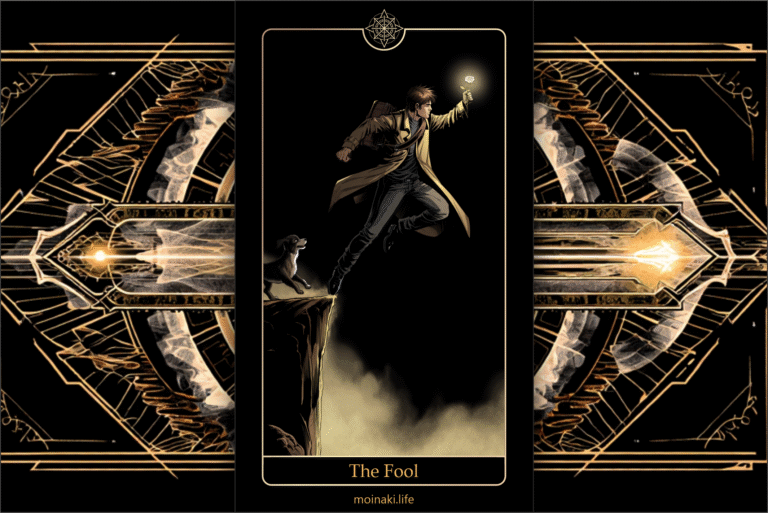The Hanged Man
The Hanged Man is one of those tarot cards that instantly catches your eye. A figure hangs upside down, suspended by one foot, but there’s a sense of calm serenity on his face rather than distress. This card is an invitation to pause, reflect, and see things from a different perspective. Let’s explore what The Hanged Man can offer us—not just as a tarot symbol, but as a source of insight for personal growth, emotional resilience, and mindful decision-making.
Understanding the Context of The Hanged Man
In classic tarot imagery, The Hanged Man is depicted hanging from a tree or wooden beam, often with a glowing halo around his head, suggesting enlightenment. His other leg is bent, and his arms are sometimes tied behind his back or relaxed at his sides. Importantly, the Hanged Man doesn’t seem to struggle. Instead, he appears at peace, almost as if he chose this suspension.
The symbolism here is powerful: voluntary surrender, letting go, and seeing the world from a new angle. This card is not about punishment or defeat but about a conscious pause—a necessary “time-out” to gain clarity or wisdom.
“Sometimes, letting go is an act of far greater power than defending or hanging on.” — Eckhart Tolle
Core Meanings: Upright and Reversed
Upright Meaning
When The Hanged Man appears upright, it signals a time for pause, surrender, and perspective shift. It often shows up when you feel stuck or when a decision needs to be made, but the usual ways of thinking and acting aren’t working.
- Pause and Reflection: The card encourages you to step back from the rush and look at your situation from a new vantage point.
- Letting Go of Control: Sometimes, progress means releasing your grip, even if it feels uncomfortable at first.
- Non-Action as Action: Taking no immediate action can be a choice, giving space for insights to emerge.
- Personal Sacrifice: You may need to give up something—an old belief, a habit, or a desire—to move forward.
Reversed Meaning
If The Hanged Man is reversed, its energy shifts. You might be feeling suspended, but not by choice—like being stuck in limbo or resisting the need to pause.
- Stagnation: A sense of being stuck or unable to make progress, perhaps because of fear or reluctance to change.
- Missed Opportunities for Insight: When you avoid reflecting or letting go, you might miss chances for personal growth.
- Resistance to Surrender: Maybe you’re clinging to control or old patterns, even when they’re not serving you.
- Impatience: Wanting answers or results before the time is right.
Applying The Hanged Man in Modern Life
Psychological and Emotional Interpretation
The Hanged Man offers a gentle reminder that sometimes, the best way forward is to stop and look around. In our fast-paced world, pausing can feel counterintuitive—or even frightening—but it’s often exactly what we need to regain perspective.
From a psychological point of view, The Hanged Man invites us to practice acceptance and mindfulness. If you’re experiencing anxiety, indecision, or burnout, this card encourages you to:
- Notice where you’re holding on too tightly—whether to expectations, roles, or self-judgment.
- Allow yourself to step back, even if it feels uncomfortable or unproductive at first.
- Observe your emotions without rushing to fix or suppress them.
This card is also about shifting perspective. When we’re stuck in a problem, we often see only one side. The Hanged Man suggests: What if you looked at this upside down? What if you accepted uncertainty as part of the process?
In Work and Relationships
In professional settings, The Hanged Man can signal a need for patience. If a project is stalled or a decision feels impossible, it might be time to pause and gather new information. Forcing solutions rarely brings the best outcomes.
In relationships, this card can indicate a phase where waiting and listening are more valuable than immediate action. It could be about giving space to yourself or another person, or about letting go of the need to “fix” everything right now.
“Sometimes, the bravest thing you can do is to wait and trust the process.”
Concrete Steps and Mindful Exercises
1. Practice Conscious Pausing
- Set a timer for five minutes. Sit quietly and notice your thoughts and feelings without trying to change them. What do you notice about your urge to act or fix things?
2. Journal from a New Perspective
- Write about a current challenge as if you were an outsider looking in, or as if you were giving advice to a good friend. What changes?
3. Release One Control
- Identify one area in your life where you’re holding on tightly. Experiment with letting go—just a little. Notice how it feels and what thoughts come up.
4. Embrace the “In-Between”
- Remind yourself: “Being in-between is not failure. It’s a necessary part of growth.” Repeat this affirmation when you feel impatient or restless.
5. Mindful Observation Exercise
- Choose an ordinary object and look at it from a new angle—literally. What details do you notice that you usually miss? Use this as a metaphor for your current life situation.
Gentle Reminders for Personal Growth
The Hanged Man isn’t asking you to give up—it’s inviting you to pause, reflect, and trust that a new perspective is possible. If you’re feeling lost, stuck, or overwhelmed, remember: It’s okay to take a break. Sometimes, the answers come not from doing more, but from creating space for insight to arise.
*Tarot is not fortune-telling — it’s a mirror for reflection and growth.*


